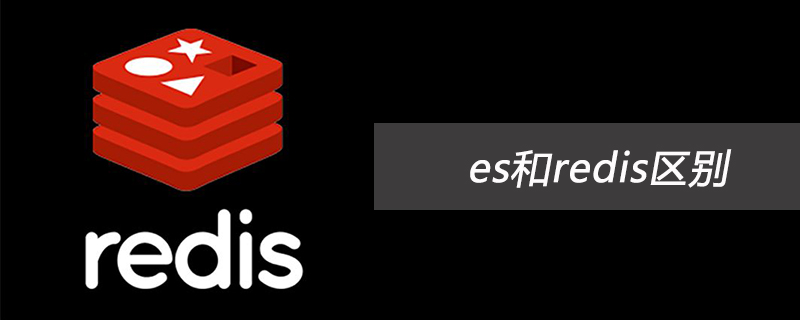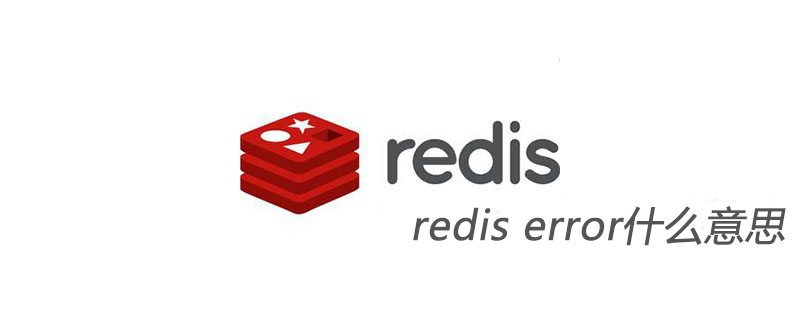Underlying implementation

#The underlying implementation of Redis's list data structure is based on a doubly linked list. A doubly linked list is a common data structure that consists of a series of nodes. Each node is represented by a listNode structure, which contains a pointer prev pointing to the previous node, a pointer next pointing to the next node and a storage A pointer to value value. The doubly linked list in Redis is composed of nodes, each node represents an element and is connected through pointers.
The advantage of a doubly linked list is that insertion and deletion operations can be performed quickly at the head and tail. In Redis, when a new element is inserted into the head or tail of the List, you only need to modify the prev and next pointers of the new node and the prev or next pointer of the original head or tail node to complete the insertion operation. The time is complicated. The degree is O(1). Similarly, when an element is deleted, you only need to modify the next pointer of the previous node or the prev pointer of the next node to complete the deletion operation, and the time complexity is also O(1).
Redis uses other technologies to improve the performance of the List data structure, in addition to using doubly linked lists. For example, when the number of elements in the List exceeds a certain threshold, Redis will convert the List into a compressed list (zip list), which can reduce memory usage and increase access speed. When iterating over a List, Redis uses an iterator to traverse the elements in the List, which can avoid errors caused by modifying the List during the traversal process.

#Redis' list type data structure allows adding or removing elements at the beginning or end of the list, and inserting or deleting elements at specified positions. These operations can be completed in constant time because Redis's doubly linked list implementation supports fast access to head and tail nodes, as well as insertion and deletion of nodes at specified locations.

The following are some common Redis list operations and their time complexity:
LPUSH: insert elements at the head, time The complexity is O(1).
RPUSH: Insert elements at the end, the time complexity is O(1).
LPOP: Delete the header element, the time complexity is O(1).
RPOP: Delete the tail elements, the time complexity is O(1).
LINDEX: Access the element at the specified position, the time complexity is O(n).
LINSERT: Insert an element at the specified position, the time complexity is O(n).
LREM: Delete the specified element, the time complexity is O(n).

Source code implementation
The underlying code of the Redis List data structure implements demo, using C language:
typedef struct listNode {
struct listNode *prev;
struct listNode *next;
void *value;
} listNode;
typedef struct list {
listNode *head;
listNode *tail;
unsigned long len;
} list;
list *listCreate(void) {
list *l;
if ((l = malloc(sizeof(*l))) == NULL) return NULL;
l->head = l->tail = NULL;
l->len = 0;
return l;
}
void listRelease(list *list) {
unsigned long len;
listNode *current, *next;
current = list->head;
len = list->len;
while(len--) {
next = current->next;
free(current);
current = next;
}
free(list);
}
listNode *listAddNodeHead(list *list, void *value) {
listNode *node;
if ((node = malloc(sizeof(*node))) == NULL) return NULL;
node->value = value;
if (list->len == 0) {
list->head = list->tail = node;
node->prev = node->next = NULL;
} else {
node->prev = NULL;
node->next = list->head;
list->head->prev = node;
list->head = node;
}
list->len++;
return node;
}
listNode *listAddNodeTail(list *list, void *value) {
listNode *node;
if ((node = malloc(sizeof(*node))) == NULL) return NULL;
node->value = value;
if (list->len == 0) {
list->head = list->tail = node;
node->prev = node->next = NULL;
} else {
node->prev = list->tail;
node->next = NULL;
list->tail->next = node;
list->tail = node;
}
list->len++;
return node;
}
void listDelNode(list *list, listNode *node) {
if (node->prev)
node->prev->next = node->next;
else
list->head = node->next;
if (node->next)
node->next->prev = node->prev;
else
list->tail = node->prev;
free(node);
list->len--;
}The above code implements the basic operations of the List data structure, including creating List, releasing List, inserting elements at the head and tail, and deleting elements. The time complexity of these operations is O(1).
Practical Uses in Production
The Redis List data structure has many wonderful uses in the production environment:
Message Queue: Redis List can be used as a message queue, The producer pushes the message into the List, and the consumer obtains the message and processes it blockingly through commands such as blpop and brpop, thus realizing a simple message queue.
Ranking list: The push and pop operations of Redis List both have time complexity of O(1). The user's score can be stored in the List as a value and then obtained through the lrange command. Ranking list.
Recent Contact List: The ID of the user's recent contacts can be stored in the List, and whenever the user interacts with a contact, the ID of the contact is moved to The head of the List, so that the user's recent contact list can be obtained through the lrange command.
Paging query: You can store the data in List, and then use the lrange command to perform paging query.
Slow log: Redis can record commands whose execution time exceeds a certain threshold, store the information of these commands in List, and obtain slow log information through the lrange command.
Chat room: You can store the messages in the chat room in a List. Whenever there is a new message, push it to the List, and then get the latest message through the lrange command.
Task queue: You can store the tasks that need to be executed in a List, and then obtain the tasks through the lpop command and execute them.
Real-time data statistics: You can store real-time data in List, and then use the lrange command to obtain data within a certain time range and perform statistical analysis.
队列延迟处理:可以将需要延迟处理的任务存储在 List 中,同时将任务的执行时间作为 score 存储在 Sorted Set 中,然后使用 Redis 的定时任务功能,每隔一段时间就将 Sorted Set 中过期的任务移动到 List 中,然后通过 lpop 命令获取任务并执行。
日志收集:可以将应用程序的日志信息存储在 List 中,然后通过 lrange 命令获取日志信息进行分析和处理。
实战实例
基于 Redis List 数据结构实现消息队列的 Java 代码示例:
import redis.clients.jedis.Jedis;
public class RedisMessageQueue {
private Jedis jedis;
private String queueKey;
public RedisMessageQueue(Jedis jedis, String queueKey) {
this.jedis = jedis;
this.queueKey = queueKey;
}
public void enqueue(String message) {
jedis.rpush(queueKey, message);
}
public String dequeue() {
return jedis.lpop(queueKey);
}
}示例中,定义了一个 RedisMessageQueue 类,包含一个 Jedis 对象和一个队列键名 queueKey。enqueue 方法用于将消息 push 到队列中,dequeue 方法用于从队列中获取消息并将其 pop 出来,使用该类可以方便地实现消息队列功能。
使用方法如下:
import redis.clients.jedis.Jedis;
public class TestRedisMessageQueue {
public static void main(String[] args) {
Jedis jedis = new Jedis("localhost");
RedisMessageQueue queue = new RedisMessageQueue(jedis, "myqueue");
// 生产者向队列中添加消息
queue.enqueue("Hello, Redis!");
queue.enqueue("How are you?");
// 消费者从队列中获取消息
String message = queue.dequeue();
while (message != null) {
System.out.println("Received message: " + message);
message = queue.dequeue();
}
}
}我已经构建了一个 RedisMessageQueue 实例,并向队列中添加了两条信息。接着,调用 dequeue 方法从队列中取出消息,并将其输出到控制台。
该示例代码仅为演示 Redis List 数据结构实现消息队列的思路,实际生产环境中需要考虑更多的细节问题,例如如何处理消息重复、如何保证消息的可靠性等等。
Redis 聊天室示例
import redis.clients.jedis.Jedis;
import redis.clients.jedis.JedisPubSub;
import java.util.Scanner;
public class RedisChatRoom {
private Jedis jedis;
private String channel;
private String chatListKey;
public RedisChatRoom(Jedis jedis, String channel, String chatListKey) {
this.jedis = jedis;
this.channel = channel;
this.chatListKey = chatListKey;
}
public void start() {
// 订阅 Redis 频道
jedis.subscribe(new JedisPubSub() {
@Override
public void onMessage(String channel, String message) {
System.out.println("Received message: " + message);
// 将消息添加到聊天列表中
jedis.rpush(chatListKey, message);
}
}, channel);
// 发布消息到 Redis 频道
Scanner scanner = new Scanner(System.in);
while (true) {
System.out.print("Enter message: ");
String message = scanner.nextLine();
jedis.publish(channel, message);
}
}
public void printChatList() {
// 获取聊天列表中的所有消息并输出到控制台
System.out.println("Chat list:");
for (String message : jedis.lrange(chatListKey, 0, -1)) {
System.out.println(message);
}
}
}示例中,RedisChatRoom 类中添加了一个聊天列表 chatListKey,用于存储聊天室中的所有消息。在订阅 Redis 频道时,通过 JedisPubSub 的 onMessage 方法将收到的消息添加到聊天列表中。在 printChatList 方法中,通过 lrange 命令获取聊天列表中的所有消息,并输出到控制台中。
使用方法如下:
import redis.clients.jedis.Jedis;
public class TestRedisChatRoom {
public static void main(String[] args) {
Jedis jedis = new Jedis("localhost");
RedisChatRoom chatRoom = new RedisChatRoom(jedis, "mychannel", "mychatlist");
chatRoom.start();
chatRoom.printChatList();
}
}创建了一个 RedisChatRoom 对象,并指定了频道名为 mychannel 和聊天列表键名为 mychatlist。执行 start 方法即可开始 Redis 频道的订阅并发布消息。在最后一步中,使用 printChatList 方法从聊天列表中获取所有消息并输出到控制台上。
该示例仅仅简单演示 Redis List 数据结构实现聊天室的思路,实际项目中需要更周全的设计以及考虑。
The above is the detailed content of How to implement the bottom layer of Redis linked list. For more information, please follow other related articles on the PHP Chinese website!
 es和redis区别Jul 06, 2019 pm 01:45 PM
es和redis区别Jul 06, 2019 pm 01:45 PMRedis是现在最热门的key-value数据库,Redis的最大特点是key-value存储所带来的简单和高性能;相较于MongoDB和Redis,晚一年发布的ES可能知名度要低一些,ES的特点是搜索,ES是围绕搜索设计的。
 一起来聊聊Redis有什么优势和特点May 16, 2022 pm 06:04 PM
一起来聊聊Redis有什么优势和特点May 16, 2022 pm 06:04 PM本篇文章给大家带来了关于redis的相关知识,其中主要介绍了关于redis的一些优势和特点,Redis 是一个开源的使用ANSI C语言编写、遵守 BSD 协议、支持网络、可基于内存、分布式存储数据库,下面一起来看一下,希望对大家有帮助。
 实例详解Redis Cluster集群收缩主从节点Apr 21, 2022 pm 06:23 PM
实例详解Redis Cluster集群收缩主从节点Apr 21, 2022 pm 06:23 PM本篇文章给大家带来了关于redis的相关知识,其中主要介绍了Redis Cluster集群收缩主从节点的相关问题,包括了Cluster集群收缩概念、将6390主节点从集群中收缩、验证数据迁移过程是否导致数据异常等,希望对大家有帮助。
 Redis实现排行榜及相同积分按时间排序功能的实现Aug 22, 2022 pm 05:51 PM
Redis实现排行榜及相同积分按时间排序功能的实现Aug 22, 2022 pm 05:51 PM本篇文章给大家带来了关于redis的相关知识,其中主要介绍了Redis实现排行榜及相同积分按时间排序,本文通过实例代码给大家介绍的非常详细,对大家的学习或工作具有一定的参考借鉴价值,希望对大家有帮助。
 详细解析Redis中命令的原子性Jun 01, 2022 am 11:58 AM
详细解析Redis中命令的原子性Jun 01, 2022 am 11:58 AM本篇文章给大家带来了关于redis的相关知识,其中主要介绍了关于原子操作中命令原子性的相关问题,包括了处理并发的方案、编程模型、多IO线程以及单命令的相关内容,下面一起看一下,希望对大家有帮助。
 实例详解Redis实现排行榜及相同积分按时间排序功能的实现Aug 26, 2022 pm 02:09 PM
实例详解Redis实现排行榜及相同积分按时间排序功能的实现Aug 26, 2022 pm 02:09 PM本篇文章给大家带来了关于redis的相关知识,其中主要介绍了Redis实现排行榜及相同积分按时间排序,本文通过实例代码给大家介绍的非常详细,下面一起来看一下,希望对大家有帮助。
 一文搞懂redis的bitmapApr 27, 2022 pm 07:48 PM
一文搞懂redis的bitmapApr 27, 2022 pm 07:48 PM本篇文章给大家带来了关于redis的相关知识,其中主要介绍了bitmap问题,Redis 为我们提供了位图这一数据结构,位图数据结构其实并不是一个全新的玩意,我们可以简单的认为就是个数组,只是里面的内容只能为0或1而已,希望对大家有帮助。
 redis error什么意思Jun 17, 2019 am 11:07 AM
redis error什么意思Jun 17, 2019 am 11:07 AMredis error就是redis数据库和其组合使用的部件出现错误,这个出现的错误有很多种,例如Redis被配置为保存数据库快照,但它不能持久化到硬盘,用来修改集合数据的命令不能用。


Hot AI Tools

Undresser.AI Undress
AI-powered app for creating realistic nude photos

AI Clothes Remover
Online AI tool for removing clothes from photos.

Undress AI Tool
Undress images for free

Clothoff.io
AI clothes remover

AI Hentai Generator
Generate AI Hentai for free.

Hot Article

Hot Tools

Safe Exam Browser
Safe Exam Browser is a secure browser environment for taking online exams securely. This software turns any computer into a secure workstation. It controls access to any utility and prevents students from using unauthorized resources.

SublimeText3 Mac version
God-level code editing software (SublimeText3)

Atom editor mac version download
The most popular open source editor

PhpStorm Mac version
The latest (2018.2.1) professional PHP integrated development tool

VSCode Windows 64-bit Download
A free and powerful IDE editor launched by Microsoft







